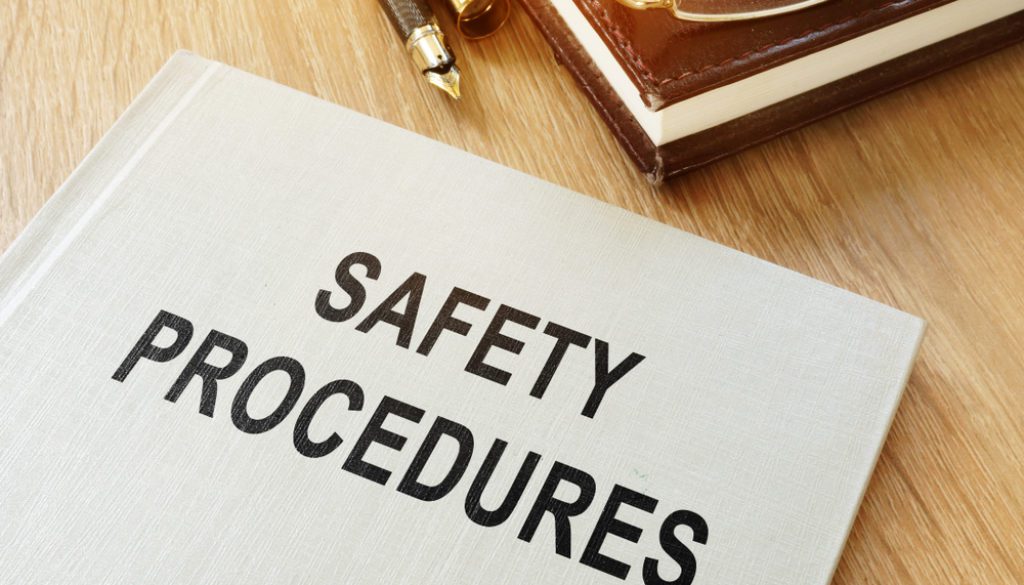Annual Safety Training Plans
Emergency preparedness and training are vital pieces of occupational safety. Government organizations, companies, schools and healthcare institutions all utilize safety training to ensure employees are ready to respond appropriately to crisis scenarios, such as fires or workplace violence. For many organizations, safety training is mandatory; the Occupational Safety and Health Administration (OSHA) requires employers to train workers who are exposed to hazards at work.
Many organizations find it challenging to schedule adequate time for training and to verify the effectiveness of their safety programs. Safety training often becomes monotonous and repetitive, and many employees find it hard to truly engage with the information. In many cases, training materials focus on only a few topics (e.g., fire drills) without covering other scenarios that are just as dangerous and also more likely (e.g., mental health crises).
Fortunately, there are ways to improve safety training to make it more engaging and effective. By developing a rotating schedule of safety training topics, employers can avoid repeating the same few topics. Switching to a new topic each month makes training more interesting and ensures all topics are covered.
Monthly safety topics
A comprehensive safety training plan includes more than just fire drills and cybersecurity warnings; environmental hazards, health concerns and crisis response are all vital topics.
- January: Severe weather
- February: First aid
- March: Health and wellness
- April: Workplace violence
- May: Mental health
- June: Emergency preparedness
- July: Heat safety
- August: Fire prevention
- September: Natural disasters
- October: Cybersecurity
- November: Personal protective equipment
- December: Cold safety
Follow this monthly training plan to ensure your workforce is informed and protected in a crisis.
January: Severe weather
Inclement weather can happen year-round, so the beginning of the year is the perfect time to teach your team how to respond to a tornado, fire, hurricane, blizzard or flood. Make sure emergency plans cover employees who work in the office as well as those working from home or in remote locations.
February: First aid
First aid is a crucial skill, but not many people have adequate training. Providing first aid training to your workers can help them feel empowered to respond in an emergency. Make sure everyone knows where first aid supplies are stored. Important first aid topics include CPR, wound care, choking intervention and the use of an AED.
March: Health and wellness
Workplace safety is about more than protection from violence or natural disasters. It’s just as important to protect employees from illnesses and injuries. Encourage employees to stay home when sick and to practice healthy behaviors. Consider investing in ergonomic office furniture and peripherals.
April: Workplace violence
All organizations must prepare for violent incidents, including verbal or physical assaults, thefts, property destruction and active shooter events. Train employees to recognize signs of possible violence, and provide a secure way for them to report potential threats. Consider hosting a “run, hide, fight” drill to teach employees how to respond during an active shooter situation.
May: Mental health
May is Mental Health Awareness Month, so it’s the perfect time to ensure your employees know how to manage their emotional and psychological well-being. Important training topics include work-life balance, stress mitigation and time management.
June: Emergency preparedness
The middle of the year is a good time to review emergency plans and protocols to make sure they are comprehensive and effective. Ensure all incident managers have access to critical documents and that employees know how to report a crisis. Verify the effectiveness of emergency communication tools.
July: Heat safety
Heat can be dangerous, especially for employees who must wear protective gear or spend long hours outdoors during the summer. Ensure managers know current OSHA regulations and update operational guidelines if necessary. Safety training should cover common signs of heat stroke and preventative measures, such as hydration.
August: Fire prevention
Fire drills are a vital part of employee safety, but a comprehensive fire safety plan must also include training on fire mitigation/prevention. Verify the locations of fire extinguishers, and check that alarm systems are working properly. Make sure that employees know their evacuation muster points, and ensure that managers can contact off-site workers during a fire.
September: Natural disasters
There is some crossover between severe weather and natural disaster training. Review common types of severe weather and remind employees of evacuation procedures. Discuss how employees should respond if they’re at home when the event occurs. Ensure managers have a reliable way to communicate with workers who are on- and off-site.
October: Cybersecurity
October is Cybersecurity Awareness Month, so it’s a good time to focus safety training on phishing, passwords and cyberattack mitigation. Consider running a phishing drill and upgrading to a two-factor authentication system. Verify data backup procedures and make sure incident managers know how to respond to a cyberattack or unplanned outage.
November: Personal protective equipment
PPE is required in many industries and organizations. OSHA requires employers to provide personal protective equipment and train their employees to use it properly. Important safety training topics could include wearing PPE, using equipment properly, handling hazardous materials and reporting potential safety hazards.
December: Cold safety
Like heat, cold can be dangerous to people and property. In December, focus on keeping your employees safe in cold weather. Training courses can cover using cold-weather clothing and gear, recognizing signs of frostbite and hypothermia and driving/walking safely on ice.
Protect employees with training and communication tools
While safety training can help employees feel ready to react during an emergency, it’s not always enough. The overwhelming stress of a crisis scenario can make people forget their training or struggle to make quick decisions. That’s where emergency communication comes in.
A reliable, robust communication system allows employers to connect with their people during and following a crisis. Administrators can send emergency alerts and notifications to warn employees of a situation and provide critical directions (e.g., shelter-in-place or evacuation instructions). Communication tools also enhance recovery procedures, allowing managers to check on their employee’s physical and mental health and communicate return-to-work protocols.
Rave Mobile Safety offers a broad selection of critical communications solutions, including mass notification tools and incident management systems. These tools integrate with existing alarm systems to enhance emergency communications for schools, hospitals, warehouses and corporations. Administrators can utilize a range of features to simplify communication with their people during drills and real-world scenarios. To learn more about our prebuilt communications tools or build a customized solution, contact our team.





